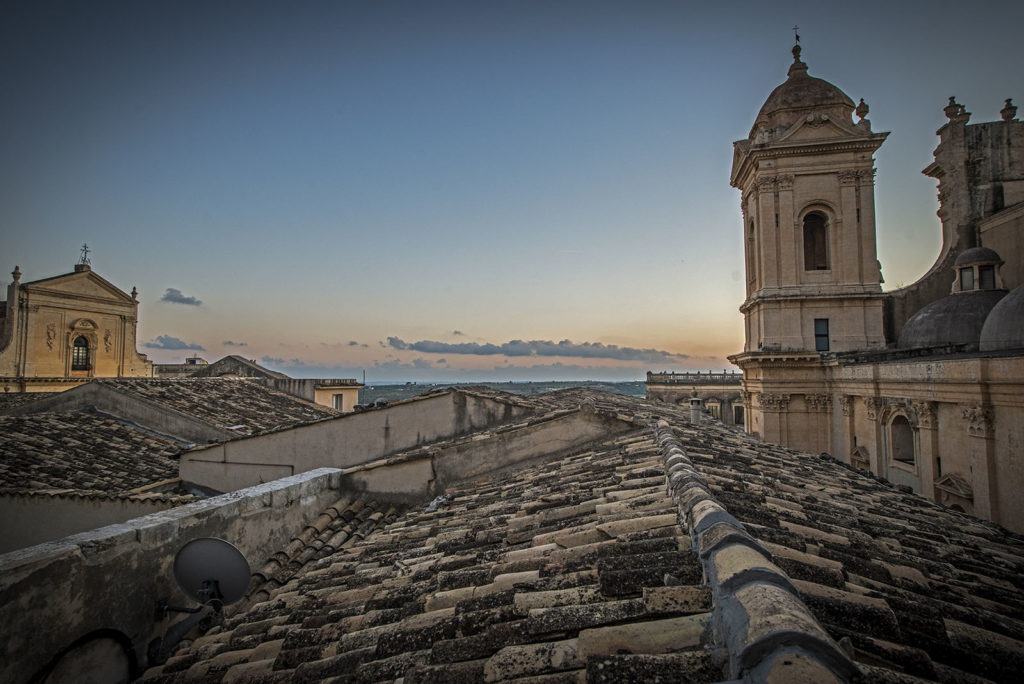The palace, built by the architect
Bernardo Labisi
,son of the more famous Paolo Labisi, immediately stands out from the sacred complex of the Monastery of the Santissimo Salvatore for its particular shape. It is a massive three-storey building complex that extends in three directions.
The main façade, over 60 metres long, is animated by 3 vertical elements that protrude from the top floor making it slenderer within the narrow perspective of the street. These attics, diagonal to the building, interrupt the balustrade cornice.
The outer sides of the building are occupied by the west wing, which consists of two terraced buildings, and the east wing, which consists of three terraced buildings. The entrance hall and the two access ramps to the floor converge on a small oval
exedra
in the centre of the vast courtyard, built in the 19th century on a slope. All these rather articulated elements give the internal façade of the palace a scenographic effect similar to a majestic theatrical backdrop.
The eastern wing has a succession of four very asymmetrical volumes with pronounced outlines of
pilasters
and balustrades, whose lengths are all different: the first unit is 20 m wide; the block with the highest terrace is 6 metres; the unit with the lowest terrace is 8 metres; and the block that houses the palace chapel, animated on the façade by four pairs of pilasters is 10 metres. It is a rather complex architectural composition.
